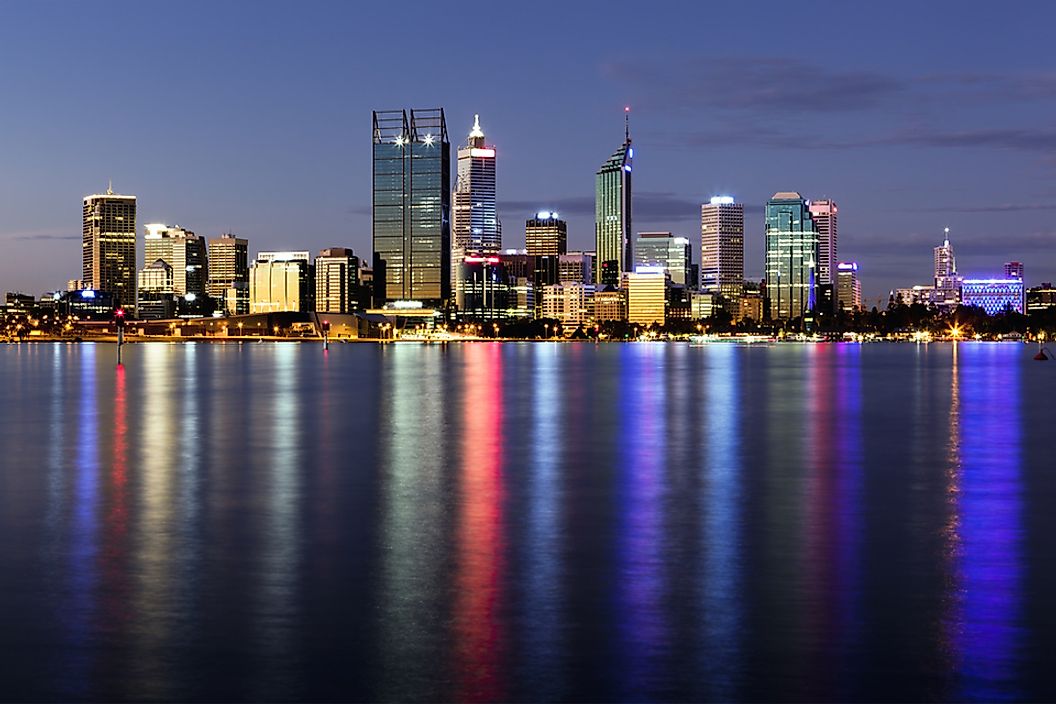What Is the Capital of Western Australia?

Western Australia (WA) is the largest state in Australia. The state covers an area of about 976,790 square miles, and occupies a large part of the western part of the country. It is the second largest subdivision of a country, second to Russia's Sakha Republic. It is occupied by about 2.6 million people, who represent about 11% of Australia’s population. Perth is the capital of Western Australia.
Overview of Perth
Perth is the fourth largest city in Australia, and the capital of Western Australian. It is located about 12 miles from the mouth of the Swan River. The city is the epicenter of a metropolitan area that accounts for about three-fourths of Western Australia’s population. The city was founded in 1829 by Captain James Stirling as an administrative center of the colony before it gained city status in 1856. Perth is home to the supreme court, state parliament, and government house. In August 2016 the city was listed as one of the most livable cities in the world by the Economist Intelligence Unit.
Climate
Perth is the fourth wettest city in Australia, as it receives moderate rainfall during the rainy season, but remains dry for much of the year. The city experiences hot, dry summers between December and late March, but relatively cool and wet winters. Perth averages 8.8 hours of sunshine per day, and an average of 138.7 clear days each year. During summer the city experiences a minuscule amount of rainfall in the form of thunderstorms, and occasional tropical cyclones from the northwest result in heavy but short-lived rainfall.
Demographics
Perth is the fourth most populous city in Australia, with a metropolitan population of about 2.1 million. The population is composed of the following ethnic groups: English (28.6%), Australian (25.6%), Irish (6.2%), and Italians (6.1%). Other ethnic groups include Chinese and Japanese, who also inhabit the city. The 20th century witnessed an influx of European immigrants, who flocked to the city and established residence. A majority of the population are Christians, 28% are Anglican Protestants, while 23% are Roman Catholics. Islam and Buddhism each have about 20,000 followers within the metropolitan area.
Economy
Perth’s population and role as the capital and administrative center of Western Australian make it the state's economic hub. Although significant economic activities such as agriculture and mining are located elsewhere within the state, it has created development opportunities for other investments and has diversified the market. The service industry is the dominant sector of the economy, followed by the manufacturing sector. After World War II, the city grew rapidly, and aided by a large number of people owning motor vehicles, the workforce was decentralized by improved transport, which resulted in growth in the suburbs. The suburban zones of Welshpool, Fremantle, and Kwinana are home to several industries, including plaster, cement, steel, aluminum, and farm machinery.
Governance
Perth is governed by the City of Perth Council, which is comprised of 8 elected councilors and a mayor. The mayor is elected every four years, and the last election was held in 2015, while the local government elections are held biennially. Half the councilors are elected to serve for four-year terms. The last four councilors were elected in 2013, and their terms end in October 2017.











